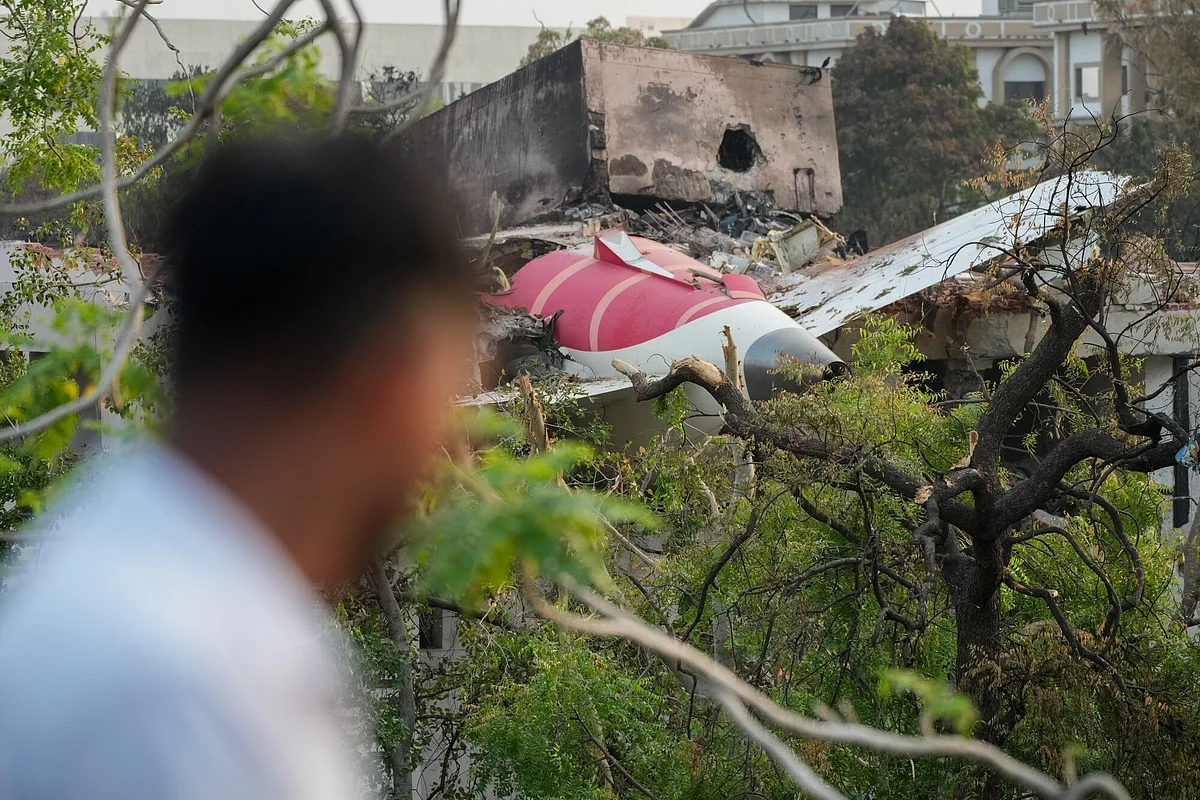Dubai: Just when the investigation into Air India flight AI171 seemed to shift its focus toward possible cockpit error, aviation experts are warning: don’t jump to conclusions yet.
But even now, key evidence and past incidents suggest the cause may still lie elsewhere — with system design, ignored advisories, or software faults that mimic human mistakes.
Here’s why the probe can’t yet put the blame squarely on the pilots.
1. A switch moved — but what moved it?
The Aircraft Accident Investigation Bureau (AAIB) noted that both engines of the Boeing 787 Dreamliner lost power seconds after takeoff — a signature sign of fuel interruption. The report confirmed that the fuel switch transitioned from “Run” to “Cutoff”, but was found back in the "Run" position at the crash site.
This opened the door to speculation: Was it manually triggered — or something else?
US aviation expert Mary Schiavo rejects the assumption of human error. Speaking to Indian English-language business news portal Financial Express, she said, “The pilots never touched the fuel cutoff.” Her reasoning? There’s precedent.
2. Did the software have a known bug?
Schiavo points to a similar Boeing 787 incident involving All Nippon Airways in 2019, where both engines failed due to a software glitch — the aircraft's system falsely believed it was on the ground and cut fuel accordingly.
Known as Thrust Control Malfunction Accommodation (TCMA), the system interacts with FADEC (the engine control unit), and can automatically reduce thrust or cut fuel — without pilot input. That aircraft was safely towed. AI171, by contrast, had no altitude or time to recover.
Schiavo adds: “Restarting an engine in flight can take several seconds... the pilots didn’t have that chance.”
3. Bad cockpit design created bad optics?
Even if the switch was triggered mid-takeoff, it may not have been deliberate.
Aviation consultant Captain Ehsan Khalid, in an interview with the Press Trust of India (PTI), points to the cockpit layout as a serious design concern. The stabilizer control switches — which the crew reported issues with earlier — are located next to the fuel cut-off switches. In the chaos of a stabilizer failure, a pilot could reach for one switch and hit the other.
This doesn’t mean the pilot “made a mistake” in the traditional sense. It means the cockpit setup made such an error more likely.
“I have a problem with the Boeing philosophy,” Khalid, told PTI. “During takeoff, the flying pilot is focused entirely on maintaining climb and cannot afford any distraction.” This design flaw may have placed the crew in a no-win situation.
4. Regulators warned — but did inspections fall short?
Less than a month before the crash, the UK Civil Aviation Authority issued a warning over fuel shutoff valve issues on Boeing aircraft, including the 787. The fuel control system had shown signs of potential failure across multiple models.
And yet, Air India had not inspected the locking mechanism of the AI171’s fuel switch — despite replacing its Throttle Control Module in 2019 and 2023. That’s because a 2018 FAA advisory about the component wasn’t mandatory.
If anything, maintenance gaps may have helped create conditions for the crash — again, without pilot fault.
5. Air India pilots may never have stood a chance?
Even if the fuel was shut off mid-air — by system glitch or accidental switch — the timeline is sobering.
The aircraft crashed just two minutes after takeoff. There was little altitude, barely any airspeed, and no time to attempt an engine restart. Schiavo explains that in some aircraft, relighting an engine can take 20–30 seconds — an eternity in emergency conditions.
And while Boeing’s 787 can technically fly on one engine, this wasn’t one of those cases. Both engines lost thrust at once.
“The RAT [emergency power turbine] provides just enough juice to steer,” Schiavo noted. “But not enough to regain flight.”
Final thought? Don’t write off the crew just yet
It’s tempting to focus on the cockpit — especially when the voice recorder hints at internal confusion. But confusion doesn’t equal guilt. It could reflect a deeper issue with Boeing’s aircraft systems, design, or software logic.
The AAIB’s final report may take months, but if its goal is safety and accountability — not just blame — it must look beyond the pilots.
Because if this was another software issue misread as a human mistake, rushing to judgment risks missing the real cause — and failing to prevent the next one.
Sign up for the Daily Briefing
Get the latest news and updates straight to your inbox
Network Links
GN StoreDownload our app
© Al Nisr Publishing LLC 2026. All rights reserved.

